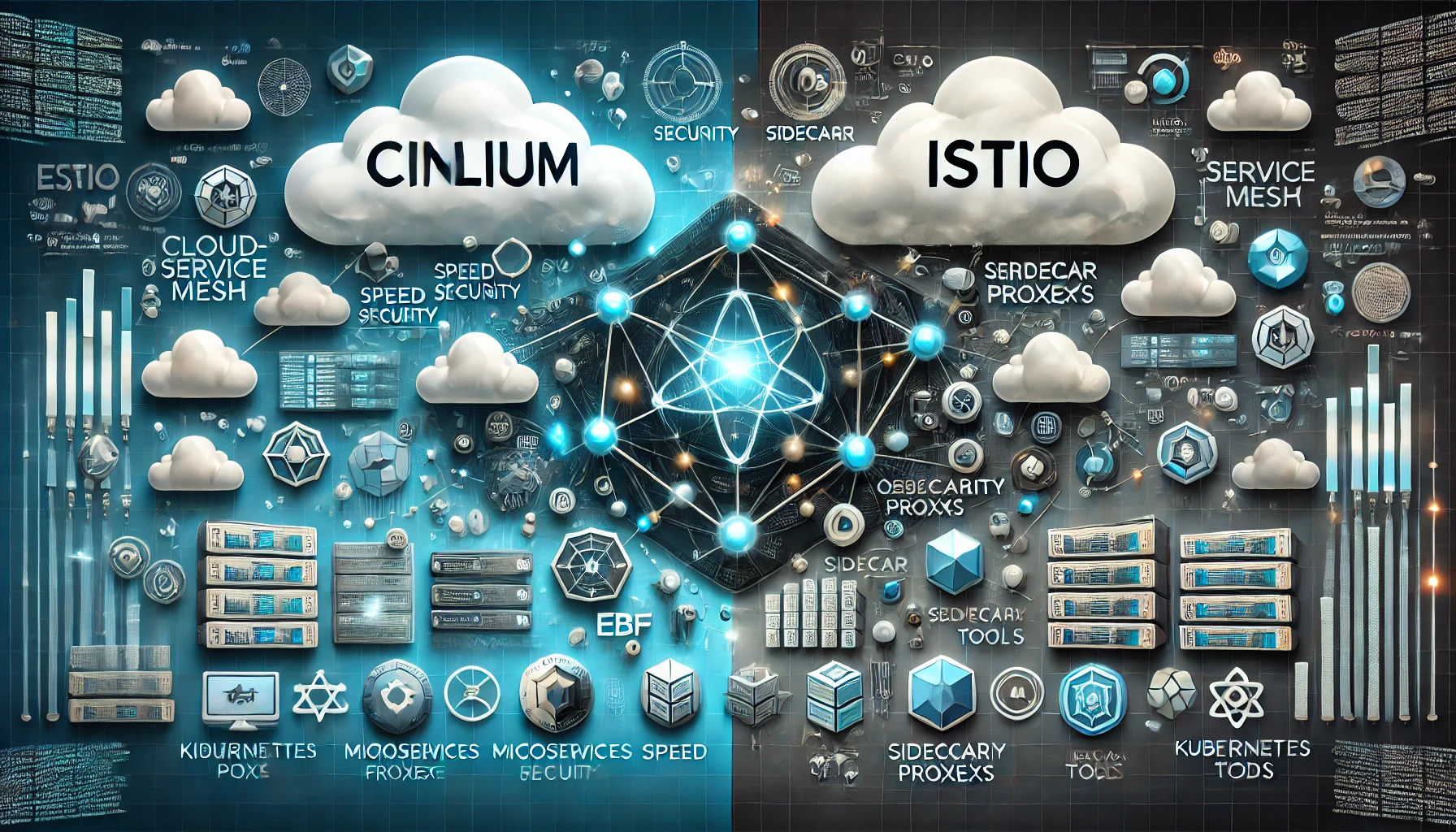Comparing Cilium and Istio - Choosing the Right Tool for Your Cloud-Native Network Needs

As Kubernetes adoption grows, so does the need for advanced networking and service mesh capabilities to manage increasingly complex environments. Among the myriad of tools available, Cilium and Istio stand out for their unique approaches to solving modern networking challenges. However, they are designed with different purposes in mind, and understanding these differences is crucial to selecting the right tool for your use case. In this post, we’ll explore the core features, use cases, and trade-offs of Cilium and Istio.
What is Cilium?
Cilium is an open-source networking and security solution built on eBPF (extended Berkeley Packet Filter). It provides Kubernetes networking, network security, and observability with low overhead by running eBPF programs directly in the Linux kernel.
Key Features of Cilium:
- Network Policies: Advanced, Kubernetes-native network policy enforcement at Layer 3/4 and Layer 7.
- Performance: High efficiency due to eBPF's kernel-level packet processing.
- Observability: Fine-grained visibility into network traffic with Hubble, Cilium's observability tool.
- Service Mesh: Lightweight service mesh functionality, including traffic encryption and load balancing, without sidecars (via Cilium Service Mesh).
Use Cases for Cilium:
- Cloud-Native Networking: Replacing traditional kube-proxy with faster, eBPF-based networking.
- Security: Implementing zero-trust networking with granular security policies.
- Lightweight Service Mesh: Managing east-west traffic without the overhead of sidecars.
What is Istio?
Istio is a full-fledged service mesh designed to manage the communication between services in a microservices architecture. It focuses on service-to-service traffic management, security, and observability.
Key Features of Istio:
- Traffic Management: Fine-grained traffic routing, fault injection, retries, and mirroring.
- Security: Mutual TLS (mTLS) for service-to-service encryption, authentication, and authorization.
- Observability: Distributed tracing, metrics, and logging with integrations for tools like Prometheus, Grafana, and Jaeger.
- Sidecar Proxy: Uses Envoy sidecars for traffic interception and control.
Use Cases for Istio:
- Service Mesh: Managing complex service-to-service interactions in microservices architectures.
- Resiliency: Implementing circuit breakers, retries, and traffic shaping for robust applications.
- Multi-Cluster Deployments: Securing and managing traffic across clusters or clouds.
Cilium vs. Istio: Key Comparisons
| Feature | Cilium | Istio |
|---|---|---|
| Purpose | Networking and security with lightweight service mesh. | Full-featured service mesh for microservices. |
| Technology | eBPF-based (kernel-level) | Envoy-based (user space sidecars). |
| Performance | High performance due to no sidecar overhead. | Can introduce latency due to sidecar proxies. |
| Traffic Management | Basic traffic routing at Layer 4/7. | Advanced routing, load balancing, and fault injection. |
| Security | Granular network policies, basic mTLS support. | Full mTLS encryption, RBAC, and authentication. |
| Observability | Deep network visibility with Hubble. | Advanced tracing, logging, and metrics. |
| Ease of Use | Simple to set up for networking needs. | Complex configuration for advanced features. |
Choosing the Right Tool
- When to Choose Cilium:
- You need a Kubernetes-native CNI with advanced networking and security.
- Performance is critical, and you want to minimize sidecar overhead.
-
Your service mesh needs are lightweight, focusing on encryption and basic traffic management.
-
When to Choose Istio:
- Your application architecture involves complex service-to-service communication.
- You require advanced traffic management, resiliency, and security features.
- You are already invested in a service mesh ecosystem with sidecar proxies.
Can They Work Together?
Yes! Cilium and Istio can complement each other. For example: - Use Cilium as your CNI for efficient networking and security policies. - Deploy Istio for advanced service mesh features, leveraging its observability and traffic management capabilities.
Conclusion
Cilium and Istio both address critical aspects of Kubernetes networking but cater to different needs. While Cilium excels as a high-performance, lightweight networking solution, Istio is ideal for robust service mesh functionality. By understanding their strengths and trade-offs, you can make an informed decision to suit your Kubernetes environment.
Whether you’re just starting with Kubernetes or managing a large-scale deployment, choosing the right tool is key to optimizing your application’s performance and security.